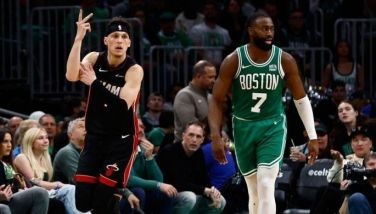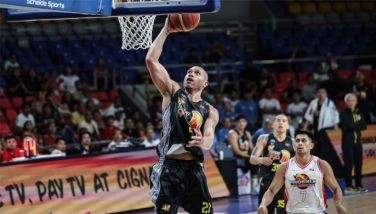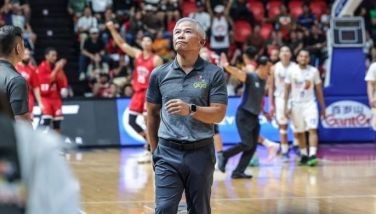Motives for team ownership
Last week, as a result of the controversy surrounding the racist comments uttered by Los Angeles owner Donald Sterling, we thought of looking into the nature, nuances and strategic intent of team owners like Sterling in professional sports, especially in America. Professional sports started in the US and teams were owned by either individuals or corporations with one dominant individual calling the shots.
We used as reference, “The Business of Sportsâ€, a book edited by Scott R. Rosner and Kenneth L. Shropshire, with particular emphasis on the chapter entitled “Ownershipâ€.
In last week’s column, Shropshire and Rosner, identified several generations of team owners: the “originalâ€, largely composed of men who had playing and coaching backgrounds; the second generation, comprised largely of men who had made money in other industries and whose interest in sports led them to purchase a franchise; and the third generation which is marked by individuals who have accumulated vast fortunes through outside business interests and who have purchased sports organizations for a number of different reasons – from business to pleasure.
The two gentlemen stated that the individual equity ownership model of sports organizations can take one of two forms. The first involves a single, independently wealthy owner such as “new school†owners like Mark Cuban and others who can take either a passive or active role in the club’s decision making.
The second form involves, according to the editors, a group of individuals that pool their resources to acquire ownership of the team. League rules usually require that one individual be deemed the majority owner and/or specify that one individual be labeled as the final decision maker. For example in the NFL, the majority owner’s family must have a 30 percent stake in the team; in the NBA, the requirement is 15 percent. An investment syndicate document typically outlines the rights and responsibilities of each investor.
Shropshire and Rosner state league operators have long preferred to work with individuals whom they can look directly in the eye at a meeting and with them can make decisions on the spot. League commissioners and owners prefer to deal with individuals rather than corporations and their often unwieldy board of directors and thousands of shareholders.
However with the exception of the NFL, all leagues now allow teams to be owned by both individuals and corporations despite the fact the latter is operationally less desirable. Allowing corporate ownership provides the leagues with greater access to capital markets (i.e., the pool of potential buyers). This helps keep franchise sale prices high.
True to the title of the book, Shropshire and Rosner emphasize that, although it is debatable whether the evolution from individual to corporate ownership is good or bad for the sports industry, there can be no doubt what is motivating this change: money. Although owners have always been wealthy, escalating franchise prices and operating costs have made ownership by the individual “moms and pops†that embodied the first and second generation of owners more difficult.
Shropshire and Rosner add that the game has become too risky and expensive for many team owners to play. In the US, estate planning has also led to the divestiture of sports franchises by individual owners. Even when individual owners have remained, the rationale for their involvement has changed.
The two writers state that although some venerable first – and second generation owners remain such as the descendants of the Mara and Halas families of the New York Giants and Chicago Bears, respectively, the new breed of individual owners such as Paul Allen, Jerry Jones, among others, has infused professional sports.
In addition to the franchise benefits that can result from the ownership of professional sports in terms of the possible generation of operating profits. Shropshire and Rosner point out that tax benefits, significant psychological benefits from ownership (or psychic income), such as boosted egos, publicity, access to athletes and other powerful individuals, the chance to be a “winner†on the field, retaining or enhancing a community asset (professional teams in the States and Europe are city-based), membership in an exclusive fraternity or club, and the fun of being a real life “fantasy team†owner.
Shropshire and Rosner add that the motivations of some individual owners have changed in recent years, as there is an ongoing shift in focus to the synergies that ownership can provide. Some individuals are motivated by the real estate opportunities surrounding the playing facility. Perhaps, this was the business model that Sterling of the Clippers was following. Such a model gets the team to serve as a means to accomplish the end goal of maximizing the returns on the larger real estate play. For others, team ownership provides valuable networking opportunities.
The synergies that have been pointed out certainly provide the force for ownership of professional teams. In the Philippines where professional teams are owned by corporations that have core business, usually consumer oriented, such teams are not expected to generate actual cash surpluses. Rather, participation in high-profile professional leagues provide the prestige to companies which need to create an image of dynamism and the competitive spirit, both of which are expected to benefit sales and overall reputation.
- Latest
- Trending






























